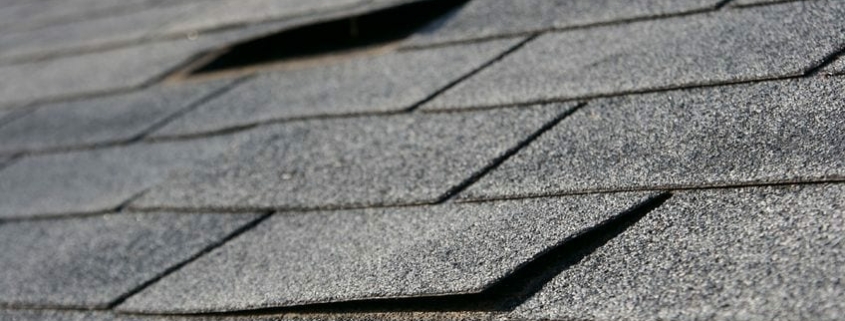Common Issues Found with Asphalt Roofing Shingles
Asphalt roofing is a popular choice for many homeowners due to its affordability, ease of installation, and relatively low maintenance requirements. However, like any roofing material, asphalt roofing shingles are not without their issues. Over time, homeowners may encounter various problems that can compromise the integrity and appearance of their roofs. In this blog, we will explore some of the most common issues found with asphalt roofing shingles and offer tips on how to address them.
Curling and Buckling Shingles
Curling or buckling is one of the most noticeable issues with asphalt roofing shingles. This occurs when shingles start to lift and curl away from the roof surface, creating an uneven appearance. Curling can be caused by several factors, including:
- Improper installation: If shingles are not installed correctly, they may not adhere properly to the roof, leading to curling.
- Poor ventilation: Inadequate ventilation can cause excess heat and moisture to build up in the attic, which can cause shingles to warp and curl.
- Age: Over time, the adhesive that holds shingles in place can deteriorate, causing them to curl.
To address curling shingles, it’s essential to ensure proper installation and ventilation. In some cases, replacing the affected shingles may be necessary.
Cracking
Cracking is another common issue with asphalt roofing shingles, especially in areas with extreme temperature fluctuations. As shingles expand and contract with changes in temperature, they can develop cracks, which can lead to leaks and water damage. Factors contributing to cracking include:
- Thermal cycling: Repeated heating and cooling cycles cause shingles to expand and contract, leading to cracks.
- Aging: As shingles age, they become more brittle and prone to cracking.
- Poor quality materials: Lower-quality asphalt shingles are more likely to crack than higher-quality ones.
To prevent cracking, homeowners should choose high-quality shingles and ensure proper attic ventilation to reduce thermal cycling. Regular inspections can also help identify and address cracks before they become severe.
Granule Loss
Asphalt roofing shingles are coated with granules that protect them from UV rays and provide fire resistance. Over time, these granules can become loose and wash away, leaving shingles vulnerable to damage. Granule loss can be caused by:
- Weathering: Exposure to the elements can cause granules to loosen and fall off.
- Physical damage: Hail, falling branches, and foot traffic can dislodge granules.
- Improper installation: Incorrectly installed shingles may shed granules more quickly.
To minimize granule loss, homeowners should perform regular roof inspections and promptly address any physical damage. If granule loss is extensive, it may be necessary to replace the affected shingles.
Blistering
Blistering occurs when pockets of moisture become trapped within the shingle, causing it to form blisters. This issue is often due to:
- Moisture: Moisture trapped in the shingle during manufacturing or installation can cause blistering.
- Heat: Excessive heat can cause trapped moisture to expand, forming blisters.
- Poor ventilation: Inadequate ventilation can exacerbate blistering by increasing attic temperatures.
To prevent blistering, ensure proper attic ventilation and choose high-quality shingles. If blistering is already present, replacing the affected shingles may be the best solution.
Algae and Moss Growth
Algae and moss growth can be unsightly and potentially damaging to asphalt roofs. These organisms thrive in moist, shaded areas and can cause:
- Discoloration: Algae can cause dark streaks and stains on shingles.
- Moisture retention: Moss can trap moisture against the roof, leading to water damage and rot.
To combat algae and moss growth, homeowners can install zinc or copper strips near the roof ridge. These metals release ions that inhibit the growth of algae and moss. Additionally, regular roof cleaning can help keep these organisms at bay.
Leaking Roof
A leaking roof is one of the most serious issues homeowners can face. Leaks can be caused by:
- Damaged shingles: Cracked, curling, or missing shingles can allow water to penetrate the roof.
- Flashing issues: Improperly installed or damaged flashing around chimneys, vents, and skylights can lead to leaks.
- Ice dams: In colder climates, ice dams can form along the roof edge, causing water to back up under the shingles.
To prevent leaks, homeowners should perform regular roof inspections, promptly repair damaged shingles, and ensure proper flashing installation. In areas prone to ice dams, installing heat cables or improving attic insulation can help mitigate this issue.
Conclusion
While asphalt roofing shingles are a popular and cost-effective option for many homeowners, it’s essential to be aware of the common issues that can arise. Regular inspections, proper installation, and timely maintenance can help prevent these problems and extend the lifespan of your asphalt roof. By addressing issues promptly, homeowners can protect their investment and ensure their roofs remain in good condition for years to come.




Leave a Reply
Want to join the discussion?Feel free to contribute!